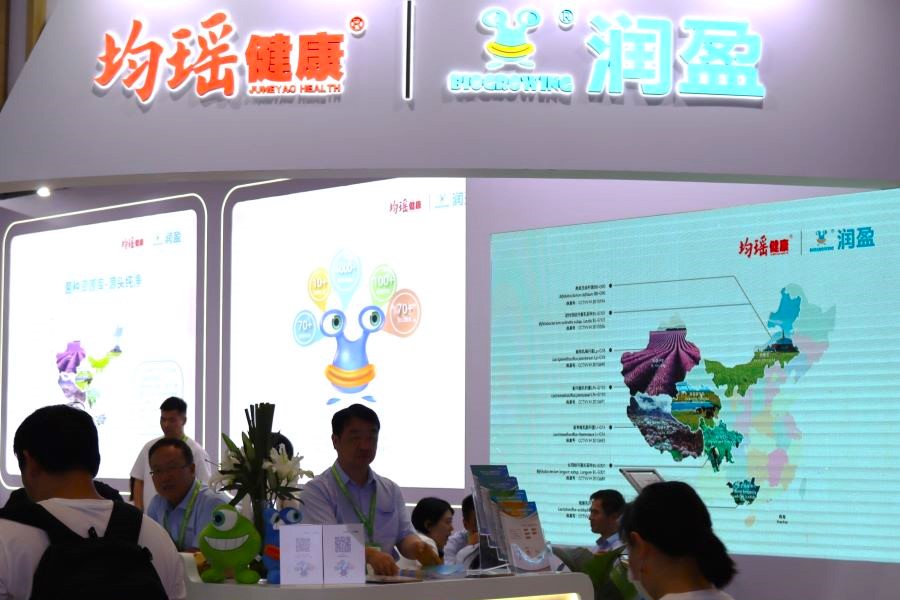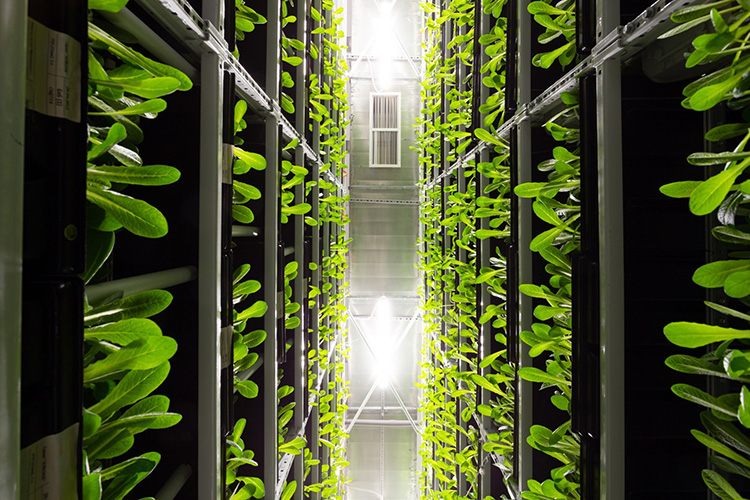Report on Factors Influencing Smallholder Farmer Participation in Collective Marketing in South Africa
A Study Focused on Achieving Sustainable Development Goals
1. Introduction: Agriculture and the Sustainable Development Goals (SDGs)
The global agenda, as outlined by the Sustainable Development Goals (SDGs), places critical importance on eradicating poverty (SDG 1) and ensuring food security (SDG 2) for rural populations. Agriculture is a cornerstone of this agenda, providing livelihoods for over a third of the world’s population and thus contributing significantly to Decent Work and Economic Growth (SDG 8). The majority of the world’s 570 million farms are smallholder operations, primarily located in less economically developed regions. These farmers, often managing 10 hectares or less, are vital to local, national, and global economies.
However, their potential to drive sustainable development is frequently hampered by significant challenges, including high marketing costs and inadequate market access. In developing nations like South Africa, a large percentage of smallholder farmers struggle to commercialize their produce, discouraging their participation in high-value markets. This report examines the potential of collective marketing as a strategic intervention to overcome these barriers, thereby enhancing farmer livelihoods and advancing key SDGs.
2. Background and Context
2.1 The Role of Smallholder Farming in Achieving SDGs in South Africa
In South Africa, a nation grappling with high unemployment and poverty, agriculture is a primary economic activity, particularly in rural areas where over 70% of households depend on it. Smallholder farming is thus a critical vehicle for achieving:
- SDG 1 (No Poverty): By providing a primary source of income.
- SDG 2 (Zero Hunger): By contributing to household and community food security.
- SDG 8 (Decent Work and Economic Growth): Through job creation and economic activity in rural areas.
Despite this potential, a lack of resources, technology, and knowledge leads to poor production and limited market participation, undermining these development goals.
2.2 Collective Marketing as a Strategy for Sustainable Development
Collective marketing has been identified as a powerful strategy to ameliorate the challenges faced by smallholder farmers. By working together, farmers can achieve economies of scale, reduce transaction costs, and increase their bargaining power. This approach directly supports several SDGs:
- SDG 10 (Reduced Inequalities): It allows smallholders to compete more effectively with larger commercial farms and gain access to high-value markets.
- SDG 12 (Responsible Consumption and Production): Collective action can facilitate the adoption of quality standards and sustainable practices.
- SDG 17 (Partnerships for the Goals): It fosters collaboration among farmers and creates a unified entity that can more easily engage with government, private sector partners, and support institutions.
However, the success of collective action is not guaranteed, as it depends on various socio-economic factors, group dynamics, and location-specific conditions. This study investigates these factors within the Ehlanzeni district of Mpumalanga, a province with high agricultural output but also high food insecurity, highlighting a critical disconnect between production and economic benefit for farmers.
3. Methodology
3.1 Study Design and Area
A quantitative, descriptive survey research design was employed. The study was conducted in the Ehlanzeni District Municipality in Mpumalanga, South Africa, an area known for its diverse agricultural production but also marked by high poverty rates, making it a relevant context for assessing interventions aimed at SDG 1 and SDG 2.
3.2 Sampling and Data Collection
A two-stage sampling procedure was used. First, the Mbombela and Nkomazi municipalities were purposively selected due to their high number of registered smallholder farmers. Second, a random sampling of 300 smallholder crop and livestock farmers was selected to participate. Data was collected using a structured questionnaire administered by trained enumerators.
3.3 Data Analysis
Data were analyzed using descriptive statistics (frequencies, means, percentages) and inferential statistics. A 5-point Likert scale was used to assess perceptions of collective marketing. To identify the determinants and constraints of participation, binary logistic and probit regression models were utilized, with participation in collective marketing as the dependent variable.
4. Key Findings
4.1 Socio-Economic Profile and SDG Implications
The socio-economic characteristics of the farmers revealed several insights relevant to the SDGs:
- Gender (SDG 5): More than half (52%) of the farmers were female, highlighting the prominent role of women in agriculture. However, literature suggests their participation in marketing activities remains limited, indicating a need for gender-inclusive strategies.
- Age and Experience: The majority of farmers were over 31 years old, with a mean age of 57, and possessed an average of 11.5 years of farming experience. This experience is a valuable asset for adopting new strategies like collective marketing.
- Farm Size and Income (SDG 1 & 8): Most farmers (88%) occupied 1-5 hectares of land. The average annual on-farm income was approximately R48,526, which is insufficient to ensure a stable livelihood, underscoring the urgency of improving profitability to combat poverty.
- Group Affiliation (SDG 17): A significant majority (66%) were not affiliated with any farmer group, indicating a low level of formal collaboration.
4.2 Collective Marketing Participation Profile
There is a clear gap between interest and current practice:
- Only 36% of farmers currently engage in collective marketing.
- However, an overwhelming 92% are willing to participate.
- Similarly, 94% expressed confidence in their ability to collaborate with other farmers.
- A major barrier identified was the lack of support, with 72% reporting they had not received any advisory services from extension officers, pointing to a weakness in institutional partnerships (SDG 17).
4.3 Perceptions on Collective Marketing and its Potential for SDG Attainment
Farmers hold a strongly positive perception of collective marketing, believing it can directly contribute to their economic well-being and sustainable growth. Key perceived benefits include:
- Advocating for participation in formal markets.
- Improving farm income (advancing SDG 1).
- Closing the product demand gap in the market.
- Granting greater bargaining power (advancing SDG 10).
- Leveling the playing field between smallholder and commercial farmers.
- Securing contract farming opportunities.
- Facilitating access to information and capital (advancing SDG 4 & 9).
- Reducing transaction costs (advancing SDG 8).
4.4 Determinants of Collective Marketing Participation
Regression analysis identified several significant factors influencing a farmer’s decision to participate in collective marketing:
- Positive Influences:
- Farming Experience: More experienced farmers are more likely to participate.
- Membership in a Farmer Organization: Being part of a group significantly increases the likelihood of engaging in collective marketing, reinforcing the importance of SDG 17.
- Frequency of Extension Visits: Regular contact with extension officers, who provide crucial information, positively influences participation, highlighting the role of knowledge transfer (SDG 4).
- Negative Influences:
- Land Ownership: Farmers with title deeds were less likely to participate, possibly due to lower financial pressure compared to those renting land.
- Selling Diverse Produce: Farmers specializing in a single commodity were more likely to engage in collective marketing, as it simplifies logistics and scaling.
4.5 Constraints to Collective Action and Sustainable Growth
Farmers identified several severe constraints that act as barriers to successful collective marketing and, by extension, the achievement of related SDGs:
- Inadequate access to legal support from stakeholders.
- Lack of access to storage facilities (a barrier to SDG 9: Infrastructure).
- Lack of knowledge and information about the benefits of collective marketing.
- Lack of marketing channels.
- Inadequate access to grants and financial support.
- Inability to work with and trust other farmers, alongside conflicts within groups (a barrier to SDG 16: Peace, Justice and Strong Institutions).
5. Conclusion and Recommendations for SDG-Aligned Action
5.1 Conclusion
Smallholder farmers in the Ehlanzeni district have a positive perception of collective marketing and recognize its potential to improve their income and market access, aligning with the objectives of SDGs 1, 2, and 8. However, actual participation remains low. This is primarily due to a lack of institutional support, inadequate infrastructure, insufficient information, and interpersonal challenges within groups. Key determinants like farming experience, group membership, and extension support underscore that fostering an enabling environment through partnerships (SDG 17) and education (SDG 4) is crucial for unlocking the potential of collective action.
5.2 Recommendations
To bridge the gap between willingness and participation, and to leverage collective marketing for sustainable development, the following actions are recommended:
- Strengthen Rural Advisory Services (SDG 4 & 17): Government and partner organizations must enhance the visibility and accessibility of educational programs focused on the benefits and operational requirements of collective marketing.
- Provide Specialized Training (SDG 4 & 16): Offer regular workshops on group formation, effective group dynamics, conflict resolution, and financial management to build the capacity for successful and peaceful collaboration.
- Improve Access to Infrastructure and Finance (SDG 9): Public and private stakeholders should invest in shared resources like storage facilities and create financial products tailored to the needs of farmer cooperatives.
- Encourage Commodity Specialization (SDG 8 & 12): Support farmers in identifying and specializing in high-demand commodities to improve their collective marketing effectiveness and access to formal markets.
- Foster Multi-Stakeholder Platforms (SDG 17): Create regular forums where farmers, extension officers, policymakers, and private sector actors can collaborate, share feedback, and co-design solutions to overcome marketing constraints.
1. Which SDGs are addressed or connected to the issues highlighted in the article?
The article addresses several Sustainable Development Goals (SDGs) by focusing on the economic and social challenges faced by smallholder farmers in South Africa. The primary issues of poverty, food security, and market access for these farmers directly link to the following SDGs:
- SDG 1: No Poverty: The article explicitly states that a critical objective is the “reduction of poverty… among rural dwellers.” It discusses how smallholder farming is a key activity for poverty reduction but highlights that many farmers still struggle to make a good living, with low on-farm incomes and dependency on social grants.
- SDG 2: Zero Hunger: The article directly mentions the “improvement of household food security” as a core objective. It discusses the role of smallholder farmers in food production, noting that while they produce a significant amount of food, the province studied is also one of the most “food-insecure provinces in the country,” indicating a disconnect between production and economic benefit or food access for the farmers themselves.
- SDG 5: Gender Equality: The article touches upon gender dynamics in agriculture by noting that the study area has more female smallholder farmers (52%) than males. It highlights their “prominent contribution” but also points out their “limited participation in key agricultural activities such as produce marketing,” which connects to the goal of achieving gender equality and empowering all women and girls.
- SDG 8: Decent Work and Economic Growth: The article frames agriculture as one of the “most significant sectors worldwide, providing livelihoods for more than one-third of the global population.” It explores how improving market participation and income for smallholder farmers contributes to job creation, economic growth, and better livelihoods in rural areas.
- SDG 10: Reduced Inequalities: The article discusses the disparities between smallholder and commercial farmers, particularly regarding market access and bargaining power. It notes that collective marketing could “level the accessibility field between the commercial and the smallholder farmers,” directly addressing the goal of reducing inequalities within and among countries.
- SDG 17: Partnerships for the Goals: The article emphasizes the importance of “collective marketing,” “farmer groups,” and “cooperatives” as a means to overcome individual challenges. It also calls for support from the “government, in partnership with rural development organizations,” to provide advisory services and training, which aligns with the goal of strengthening partnerships for sustainable development.
2. What specific targets under those SDGs can be identified based on the article’s content?
SDG 1: No Poverty
- Target 1.1: By 2030, eradicate extreme poverty for all people everywhere. The article’s core aim is to “alleviate the poverty of smallholder farmers,” who are identified as a vulnerable group often living in poverty.
- Target 1.2: By 2030, reduce at least by half the proportion of men, women, and children of all ages living in poverty in all its dimensions according to national definitions. The article discusses the high poverty rate in the Ehlanzeni district and the low income of farmers (e.g., 33% generate R30,000 or less annually), which are dimensions of poverty the study aims to address.
- Target 1.3: Implement nationally appropriate social protection systems and measures for all. The article mentions that “many respondents were beneficiaries of the old-age social grant,” which is a direct reference to a social protection system in place.
SDG 2: Zero Hunger
- Target 2.1: By 2030, end hunger and ensure access by all people, in particular the poor and people in vulnerable situations, including infants, to safe, nutritious and sufficient food all year round. The article highlights that the province is “one of the highest food-insecure provinces in the country,” directly linking to the challenge of ensuring food access.
- Target 2.3: By 2030, double the agricultural productivity and incomes of small-scale food producers, in particular women, indigenous peoples, family farmers, pastoralists and fishers. The entire article is focused on this target, analyzing factors (like collective marketing) that can “improve the income” and market participation of smallholder farmers.
SDG 5: Gender Equality
- Target 5.5: Ensure women’s full and effective participation and equal opportunities for leadership at all levels of decision-making in political, economic and public life. The article points out that while women are a majority (52%) of farmers in the study, they have “limited participation in key agricultural activities such as produce marketing,” identifying a gap in their economic participation.
- Target 5.a: Undertake reforms to give women equal rights to economic resources, as well as access to ownership and control over land. While not the main focus, the discussion on land ownership and the high participation of women in farming implies the importance of their access to economic resources like land and markets.
SDG 8: Decent Work and Economic Growth
- Target 8.2: Achieve higher levels of economic productivity through diversification, technological upgrading and innovation. The article discusses improving marketing strategies (collective marketing) and knowledge as ways to enhance productivity and income, which aligns with this target.
- Target 8.3: Promote development-oriented policies that support productive activities, decent job creation, entrepreneurship, creativity and innovation. The study’s recommendations for policymakers to support collective marketing and provide training are aimed at fostering entrepreneurship among smallholder farmers.
SDG 10: Reduced Inequalities
- Target 10.1: By 2030, progressively achieve and sustain income growth of the bottom 40 per cent of the population at a rate higher than the national average. Smallholder farmers, with an average annual on-farm income of R48,526.76, represent a low-income segment. The study’s goal to improve their income directly supports this target.
SDG 17: Partnerships for the Goals
- Target 17.17: Encourage and promote effective public, public-private and civil society partnerships, building on the experience and resourcing strategies of partnerships. The article’s focus on collective action, cooperatives, and the need for government and stakeholder support exemplifies the promotion of such partnerships to achieve development goals.
3. Are there any indicators mentioned or implied in the article that can be used to measure progress towards the identified targets?
SDG 1: No Poverty
- Indicator 1.2.1: Proportion of population living below the national poverty line. The article implies this by stating the study area has a “peak” poverty rate and that “South Africa is…experiencing high percentages (above 30%) of…poverty.”
- Indicator 1.2.2: Proportion of men, women and children of all ages living in poverty in all its dimensions. The article provides income data that can serve as a proxy: “average annual on-farm income of R48526.76,” with “33% of farmers who generate R30000 or less.”
- Indicator 1.3.1: Proportion of population covered by social protection floors/systems. The article mentions that “many respondents were beneficiaries of the old-age social grant.”
SDG 2: Zero Hunger
- Indicator 2.1.2: Prevalence of moderate or severe food insecurity in the population. This is directly mentioned: “this province is also one of the highest food-insecure provinces in the country.”
- Indicator 2.3.1: Volume of production per labour unit by classes of farming…enterprise size. The article provides data on farm size (“majority (88%) of farmers occupy 1 to 5 hectares of land”) and production capacity (“65% of the farmers indicated that they are able to produce enough yield to be part of a collective”).
- Indicator 2.3.2: Average income of small-scale food producers. This is explicitly stated: “The average annual on-farm income of R48526.76 in the surveyed area.”
SDG 5: Gender Equality
- Indicator 5.5.1: Proportion of seats held by women in (a) national parliaments and (b) local governments. While not about government, a parallel indicator is implied for economic life: the “Proportion of female smallholder farmers” (52%) versus their “limited participation in…produce marketing.”
- Indicator 5.a.1: (a) Proportion of total agricultural population with ownership or secure rights over agricultural land, by sex. The article discusses land ownership as a variable (“land ownership has a negative influence…on…willingness to participate”) and gender distribution (52% female), which together could inform this indicator.
SDG 8: Decent Work and Economic Growth
- Indicator 8.2.1: Annual growth rate of real GDP per employed person. The article’s goal to “improve the income and alleviate the poverty of smallholder farmers” through better marketing strategies is a direct effort to increase the economic productivity (and thus income) of this segment of the workforce.
SDG 10: Reduced Inequalities
- Indicator 10.1.1: Growth rates of household expenditure or income per capita among the bottom 40 per cent of the population. The income data for smallholder farmers (“average annual on-farm income of R48526.76”) serves as a baseline to measure growth for this bottom-income group.
SDG 17: Partnerships for the Goals
- Indicator 17.17.1: Amount of United States dollars committed to public-private and civil society partnerships. The article provides a qualitative indicator of partnership levels: the “Proportion of farmers affiliated with a farmer group” (34% were part of a group, while 66% were not), indicating a low level of formal partnership.
4. Table of SDGs, Targets, and Indicators
| SDGs | Targets | Indicators Identified in the Article |
|---|---|---|
| SDG 1: No Poverty | 1.1 Eradicate extreme poverty. 1.2 Reduce poverty in all its dimensions. 1.3 Implement social protection systems. |
– High poverty rate in the study area. – Average annual on-farm income (R48,526.76). – Percentage of farmers receiving social grants. |
| SDG 2: Zero Hunger | 2.1 End hunger and ensure access to food. 2.3 Double agricultural productivity and incomes of small-scale food producers. |
– High food insecurity in the province. – Average farm size (2.96 ha). – Average income of small-scale food producers (R48,526.76). – Percentage of farmers producing enough yield for collective marketing (65%). |
| SDG 5: Gender Equality | 5.5 Ensure women’s full and effective participation in economic life. 5.a Give women equal rights to economic resources. |
– Proportion of female smallholder farmers (52%). – Mention of women’s limited participation in produce marketing. |
| SDG 8: Decent Work and Economic Growth | 8.2 Achieve higher levels of economic productivity. 8.3 Promote development-oriented policies supporting entrepreneurship. |
– Percentage of population dependent on agriculture for livelihood. – Focus on improving income through innovative marketing strategies (collective action). |
| SDG 10: Reduced Inequalities | 10.1 Sustain income growth of the bottom 40 per cent. | – Income data for smallholder farmers, representing a low-income group. – Discussion of leveling the playing field between smallholder and commercial farmers. |
| SDG 17: Partnerships for the Goals | 17.17 Encourage and promote effective partnerships. | – Percentage of farmers who are members of a farmer organization (34%). – Call for government and stakeholder support for collective marketing initiatives. |
Source: frontiersin.org







